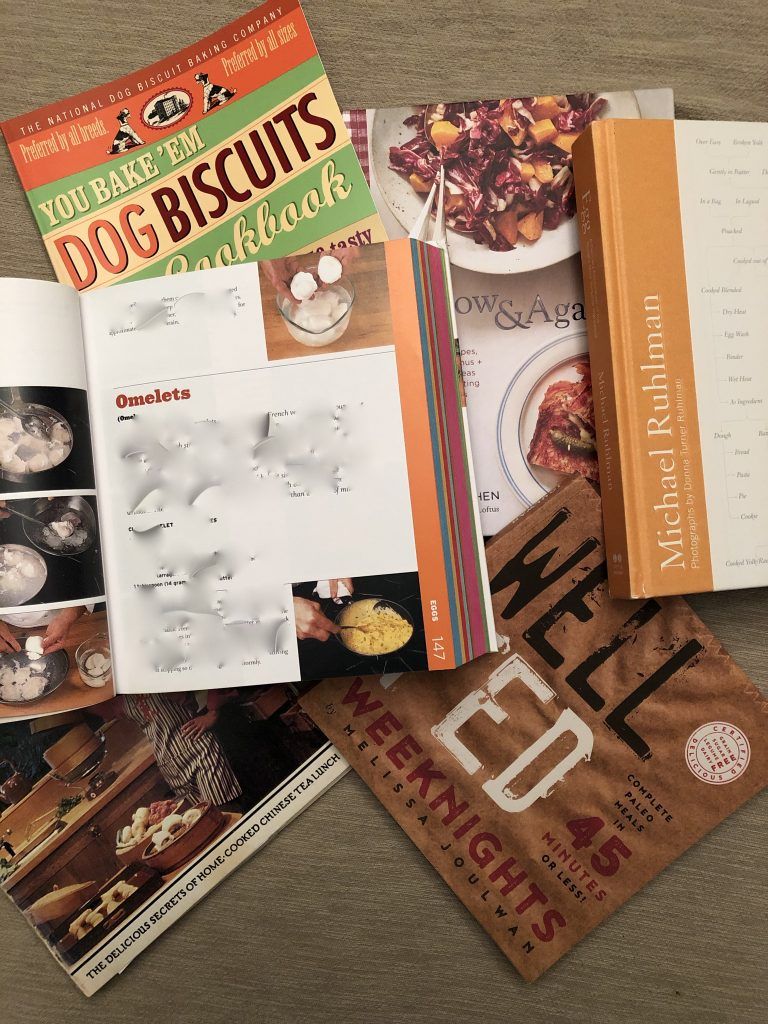Decluttering Cookbooks When You Love Them
We were working in my client’s newly renovated kitchen finding new homes for its contents when we opened up box one of several boxes of cookbooks. “The cookbooks! Where do they go!?” exclaimed Angela (not her real name, of course). Angela loves her cookbooks. Prior to the renovation, the cookbooks resided in a bookshelf that rested against a wall that was removed during the renovation. While the renovation provided Angela with more storage, we questioned whether there was enough space for the four shelves of books and everything else.
In general, books are often near and dear to people’s hearts and cookbooks are often especially so. Cookbooks are emblematic of a host of qualities: creativity, togetherness, fun, worldliness, and traditional, to name a few. On the surface, it would seem that letting go of cookbooks would be an act of rejecting these wonderful qualities, and that can make discarding challenging. So how did Angela go from having four shelves of books to a little less than one shelf? We followed a process that considered her mindset and then posed several different types of questions.
Mindset affects our perceptions and how we make decisions. For Angela, the first thing we did was discuss how the books were not imbuing positive qualities upon her. In fact, it those positive qualities already resided within Angela. Furthermore, those positive qualities are independent of the thing. Realizing that things are not material to our character can be very liberating. Our next steps focused on very practical matters.
We looked at which books Angela used a lot – her go-to books. These books were easily identified as they showed the wear of frequent use. Then we pulled out the “occasional” books. These were the books that Angela used a few times a year. After pulling out the frequently-used and occasionally-used books, we were left with a lot of books that looked as though they had never been opened. From the remainder, we immediately discarded the books with few or no pictures – Angela really needs pictures to help her choose a dish to cook. Then we identified the books that just didn’t fit her lifestyle anymore. At this point we were left with a little more than a dozen books. Upon examining the remaining group of books, Angela discarded four of them because the recipes looked a little more complicated than what she is willing to cook these days.
At this point Angela had pared down her cookbooks to a collection she feels good about. Not only did the books fit very nicely in one of her cabinets, but she had rediscovered a few books that had been lost in the former extensiveness of her collection. Recall that she did not feel very enthusiastic about paring down her books at the beginning of this process. To her credit, she was willing to work through the discomfort to get to a very satisfying conclusion. Through the process she was able to examine her beliefs about her collection and acknowledge their inaccuracies, which then freed her to examine her collection further from different perspectives. The decluttering process spotlighted the books that serve her, eliminated the books that were really “just noise,” and left Angela feeling confident. By eliminating, much was gained.

We love our cookbooks and that can make it hard to downsize our collection.










